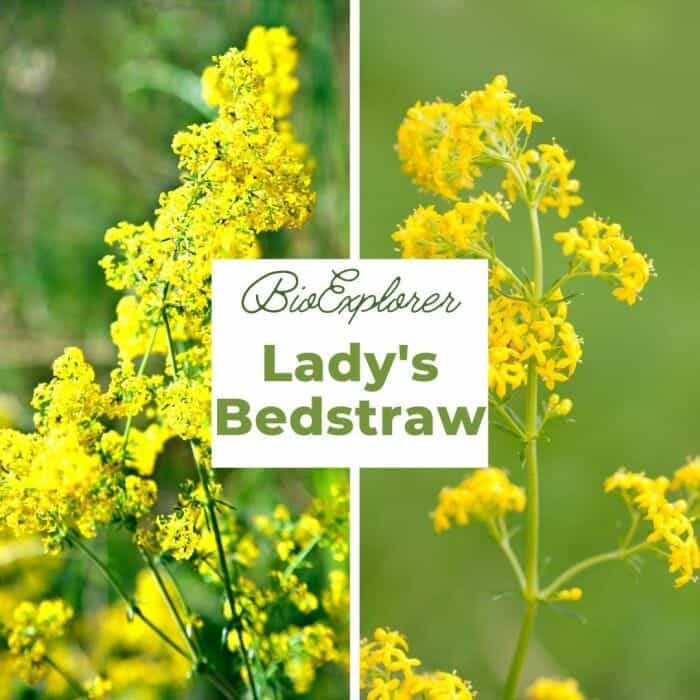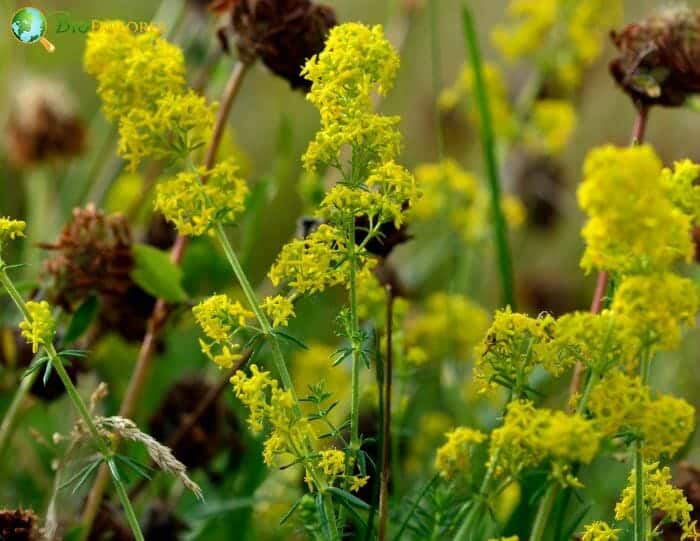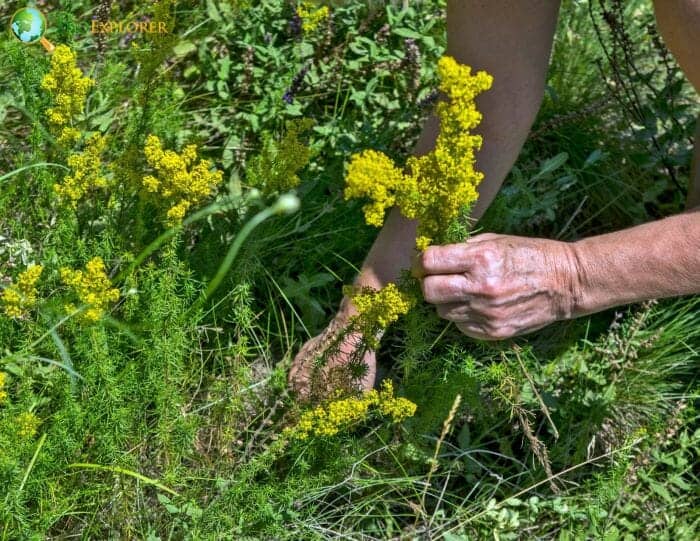
Lady’s Bedstraw (Galium verum), also known as the yellow bedstraw and cheese rennet, is a somewhat herbaceous rhizomatous perennial in the Rubiaceae family.

It usually grows 8 to 30-inches tall and 36-inches wide on upright to creeping stems. It is indigenous to Africa, Southwest Asia, and Europe, generally found in a wide range of locations, including seashores, dunes, roadsides, waste areas, dry sandy meadows, and rocky outcrops.

Many varieties and subspecies names have been proposed, but currently, only four[1] are known: Galium verum subsp. wirtgenii, Galium verum subsp. verum, Galium verum subsp. glabrescens, and Galium verum subsp. asiaticum.
In summer (July to September), four-petaled, bright yellow, fragrant flowers bloom in clustered, dense panicles. The flowers are borne at the tips of wiry erect stems clad with whorls of needle-like, bristle-tipped, linear, stalkless leaves (6 to 8 leaflets per whorl).
The yellow dye from the flower stems was used as a food coloring for butter or cheese. In addition, the plant material is said to have been used in the manger of Jesus Christ.










